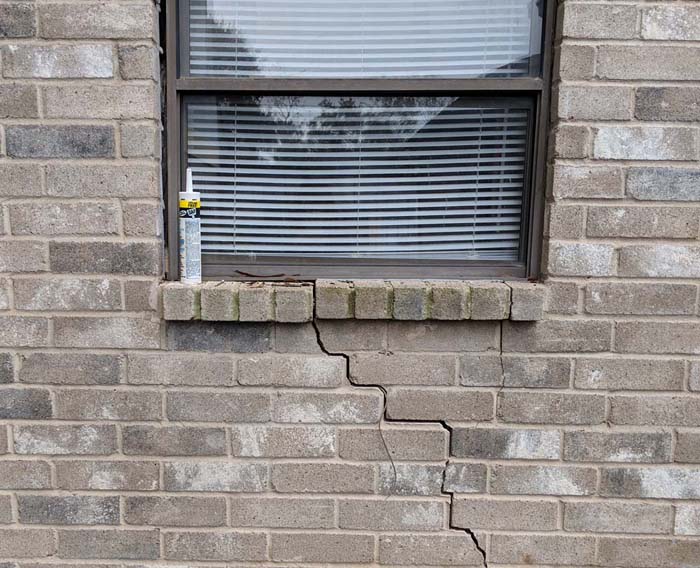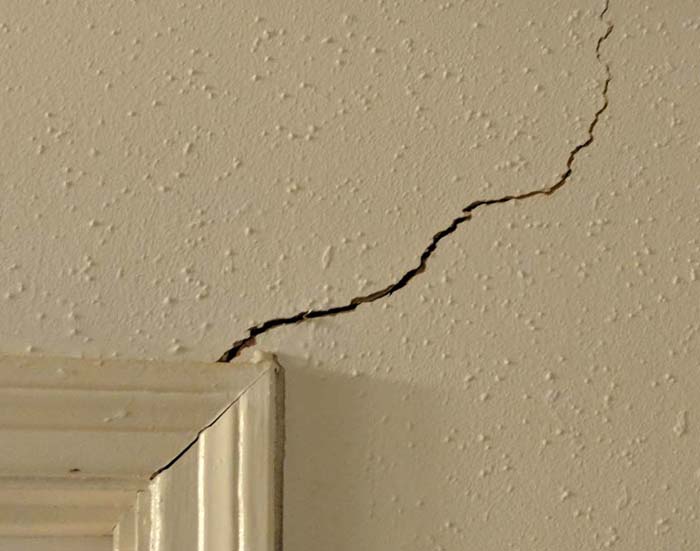Best Sugar Land Foundation Repair Company
Many companies claim to be the best Sugar Land Foundation Repair company but Dawson Foundation Repair is truly the best. Why? More time, more concrete, more labor, more steel rebar – a superior foundation repair method called Bell Bottom Piers.

The Causes Of Foundation Movement
The Fort Bend County area, which includes Sugar Land, is mostly comprised of soils that include clay. Clay is an expansive soil, that is, it will expand when wet and then contract when it dries out. The expansion and contraction of these soils can be dramatic, as much as six inches or more in vertical movement. The soils also expand and contact in lateral or horizontal directions.
When a concrete slab foundation is poured on top of these clay soils it will experience these forces of nature – expansion and contraction of the soils underneath. This will become an annual event and the ability of the slab foundation to resist these soil movements is largely determined by the thickness of the concrete slab and the steel rebar within the slab.
.
The Damage Created By Soil / Foundation Movement
When the area soils in Sugar Land become wet or saturated it is rarely a uniform event. That is, some portions of the soil may contain more clay that other portions. Or some portions of the soil underneath the foundation become wetter than other portions. When that happens it causes different rates of upheaval. Therefore, one part of the foundation may rise three inches and another part only one inch. Upheaval is probably the second greatest risk to a slab foundation.
When the clay soils become wet they also expand in a horizontal direction. However, most slab foundations have an adequate ability to resist most of these soil movements. The outer perimeter of the slab foundation (foundation beam) is very thick and it usually is 18 to 24 inches deep into the ground.

When the area soils in Sugar Land become very dry during hot summer months and droughts, the underlying clay soils lose moisture and contract dramatically. This time period poses the greatest risk to a slab foundation and the house. What happens is that portions of the soil contract so much that they “shrink” away from the bottom of the concrete foundation. When that happens it creates a void and there is nothing supporting that portion of the slab foundation. When the void becomes too big, the concrete foundation will crack and fall down to the shrunken soil. This will cause significant damage. This process is called settlement.
The most Common Types of Damage to houses resulting from soil and foundation movement are:
Interior wall cracks
Exterior wall cracks
Doors stick and do not open easily
Windows stick and do not open easily
Chimneys separate from walls
Door frames separate
Window frames separate
The Solution
The solution for concrete slab foundations that are experiencing upheaval and / or settlement is to provide a more stable base for the foundation and the house. In short, a high quality method of stabilization that is permanent.
The Quality of the Repair Method
Bell Bottom Piers – This is the Highest Quality Foundation Repair method available in Sugar Land, Texas. It offers superior quality in these key areas.
Greater Strength
– Bell Bottom Piers are built as a single unit, concrete with steel rebar in the interior. This is a far stronger support structure than a stack of concrete cylinders.
Greater Weight Bearing Capacity
– Bell Bottom Piers can support more than 5 to 10 times more weight than other repair methods. This is known as the “Factor of Safety”. The Factor of Safety for the common pushed pile method is 1.
Greater Stability
– The base or foot of the Bell Bottom Pier has 13 times more surface area than the commonly used 6 inch diameter concrete cylinder. This helps the pier resist all forms of soil movement including settlement and uplift.
